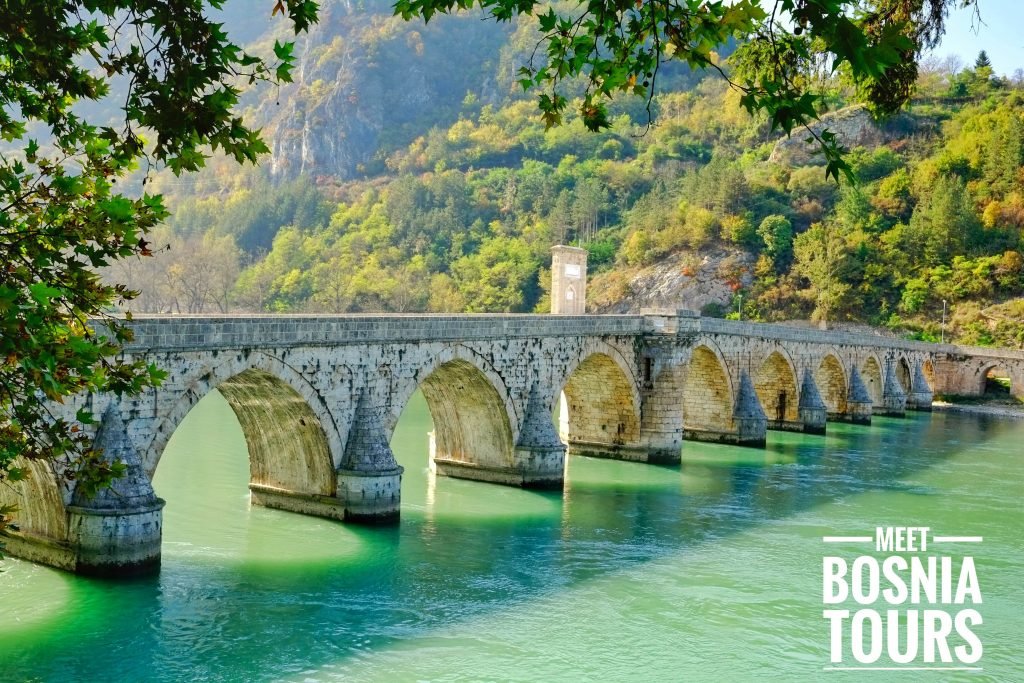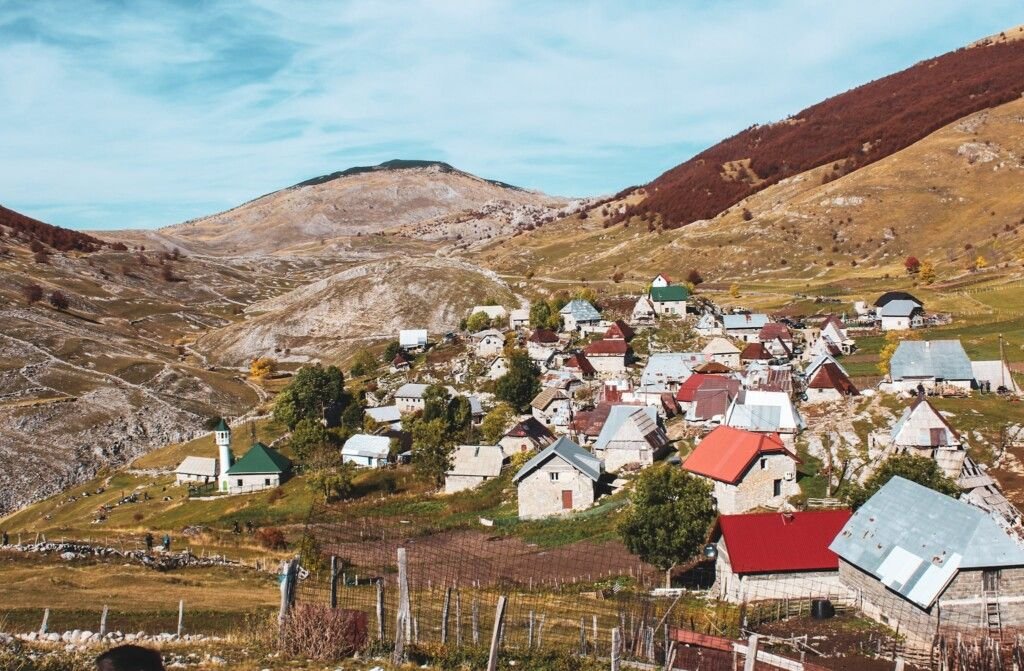UNESCO World Heritage Sites in Bosnia and Herzegovina
Heritage is what we share and inherit from the past as a mutual legacy and we have the responsibility to preserve it and pass it on to future generations. World heritage is something that belongs to everybody and its application is universal. The United Nations Educational, Scientific, and Cultural Organization (UNESCO) is dedicated to identifying, protecting, and preserving this common heritage of all humanity. This is expressed in an international treaty called the Convention concerning the Protection of the World Cultural and Natural Heritage, adopted by UNESCO in 1972.
As a place where various cultures and civilizations have met, oftentimes clashed, and joined together Bosnia is truly a meeting of cultures. One of the challenges of developing tourism in Bosnia and Herzegovina is combating prejudices and removing the aura of war which is so deeply ingrained in the consciousness of the modern world. Unbeknownst to an average Westerner (or easterner for that matter), there are plenty of sites of extraordinary value to explore in this corner of the world.
Recent history has marked Bosnia as a war-torn country and an unsafe destination. All of this was true at one point in time but the country has made great strides in developing and rebuilding itself since and most importantly it has plenty to offer. Too many tourists come to see Sarajevo and then don’t know any other interesting places or things to do in Bosnia.
UNESCO World heritage organization has recognized and acknowledged three sites in this country to be of great importance for humanity; Mehmed Paša Sokolović Bridge in Višegrad (2007), Old Bridge Area of the Old City of Mostar (2005), and Stećci Medieval Tombstone Graveyards (2016). If you are considering visiting Bosnia you should definitely consider these three sites of tremendous value. Along with them, there is a lot of sites that are on the Tentative list, and hopefully, one day they will be on the UNESCO list as well.
Mehmed Paša Sokolović Bridge in Višegrad
The old bridge in Visegrad is one of the finest examples of Ottoman heritage in the Balkans. Projected by Mimar Sinan, the most Influential Ottoman architect, it spans over the river Drina in 11 arches. The total length of the bridge is 179.5 m and its height is 15.4 m. Mimar Sinan is celebrated for the extraordinary use of proportions and in the Višegrad Bridge, he achieved an unparalleled level of elegance. This bridge was accepted by UNESCO as a World Heritage site in 2007.

Mehmed Paša Sokolović was the Grand Vizier who ordered the construction. He served three sultans and at the time was the most powerful man in the empire. Born in Bosnia and taken as a young boy through the Ottoman devshirme system he rose to prominence and decided to build the bridge over the river Drina since prior to the bridge crossing the river at that location was very dangerous and involved using a raft. There are two inscriptions on the bridge dating from the time when it was constructed. One of them specifically mentioned that no one before the Grand Vizier succeeded in building something similar.
People got more interested in the bridge when Ivo Andrić received the Nobel prize for literature. The most celebrated book he wrote is The Bridge on the Drina. It’s a fictional work of literature based in Višegrad but it covers many real events and is a masterful insight into the melting pot of Bosnia. It neatly shows how big events affected the lives of ordinary people. Meet Bosnia provides tours to Višegrad, Andrić grad, and Drvengrad. This tour is available from Sarajevo and other locations. Meet Bosnia Travel offers a daily tour from Sarajevo to Višegrad, Andrićgrad, and Drvengrad.
If you are interested in exploring even more with Meet Bosnia Travel, we offer a transfer from Sarajevo to Belgrade with a tour in the East of Bosnia and Western Serbia.
Most popular UNESCO site in BiH: Old Bridge Area of the Old City of Mostar
The city of Mostar, serving today as a cultural and economic center of Herzegovina, is renowned for its urban, architectural, and natural blend. Located on the Neretva river between the Velež mountain and Hum hill Mostar contains traces of ancient traditions together with western European and Ottoman forms. The most prominent object is undoubtedly the Old Bridge. It was constructed in the mid sixteen century by Mimar Hajrudin, the disciple of Mimar Sinan who designed the most splendid works of architecture produced by the Ottoman culture.

The bridge is one simple stone arch stretching across the river Neretva but achieving such elegance was anything but simple. At the time of its construction, it was the largest man-made single arch in the world. With a height of 42 meters, the old bridge of Mostar is famous for another unique and quite daring tradition of jumping off from the bridges’ highest point in the middle. Young men from and around Mostar prove their manhood by diving into ice-cold water and they have been doing so ever since the bridge was built.
The Old Bridge was bombed during the Bosnian war and the symbol of the city was fully destroyed. The original stones remained deep at the bottom of the river for years until the reconstruction started and some of the same stones got incorporated into the new bridge. In 2005 the bridge and the area surrounding it were enlisted on the UNESCO World heritage.
One of the most popular Herzegovina tours is Four Pearls of Herzegovina, starting from Sarajevo and including Mostar and three more cities. Mostar is one of the checkpoints of day tours from Sarajevo to Herzegovina that Meet Bosnia Travel offers.
Stećci
Stećci (singular: stećak) are medieval monolith tombstones of various sizes, shapes, inscriptions, and decorations found in and around Bosnia and Herzegovina. Some of these tombstones have the year of death inscribed in the stone so we can date them easily but that is not the case with most of them. The general consensus is that they were built from the 12 to the 16 century when as a consequence of the arrival of the Ottomans new social norms were imposed and the custom of building stećaks ceased to take place. The interesting thing is the existence of so-called hybrids, cross-forms of medieval stećaks, and typical Ottoman tombstones.

In the year 2009 four countries; Bosnia and Herzegovina, Serbia, Croatia, and Montenegro have nominated stećaks together as a UNESCO World Heritage site and finally, in 2016 it was enlisted as such. There are 28 locations that have been recognized of which 21 are in Bosnia and Herzegovina, 3 in Serbia, and 2 each in Croatia and Montenegro.
An impressive fact about stećaks is that they were used by members of different religions as is evident in the engravings in the stone (crosses, crescents, rings, etc) and in the inscriptions.
The majority of stećaks are not in good condition and throughout history, there were cases when the local people even used them as the building material for other constructions. Still, plenty of stećaks are easily accessible including those standing in front of the National Museum of Bosnia to the original necropolis around Sarajevo such as those located on the mountain Bjelašnica and Lukomir Village. Visit the original necropolis just 30 minutes from Sarajevo with Sarajevo tours to Lukomir together with Meet Bosnia Travel.

We are sincerely hoping that this blog post helped you to understand the beauty and the potential that is present in Bosnia and Herzegovina. We are a really small country that has a lot to offer, and these UNESCO heritage sites can vouch for that. So, every time you come to Sarajevo, or anywhere in Bosnia and Herzegovina, make sure to read our “UNESCO World Heritage Sites in Bosnia and Herzegovina” and save time spent on Google searching for interesting and amazing locations you can visit while in our country.
Also, following this link you can find an ideal tour for yourself and we’ll do the rest for you.
If you are a traveler who would like to add something to our list, or you are having trouble finding a new, similar to UNESCO, location to visit in Bosnia and Herzegovina, make sure you contact us with the message subject “UNESCO World Heritage sites in Bosnia and Herzegovina”. Along with that, we can recommend you to follow us on our Facebook page Meet Bosnia Tours where we regularly post our activities. Looking forward to hearing from you!
